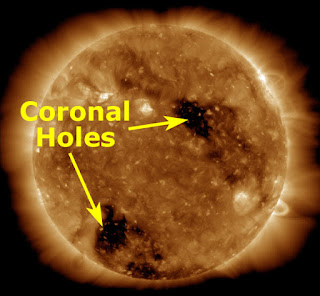 SOTA Activation: Mount Emma or Emma Burr Mountain (W0C/SP-127)
SOTA Activation: Mount Emma or Emma Burr Mountain (W0C/SP-127)
There is a SOTA (Summits On The Air) summit just north of Tincup Pass with an elevation of 13,538 feet. The SOTA database (W0C/SP-127) says the name is Mount Emma but all of my maps indicate that it is Emma Burr Mountain. (I contacted the W0C Association Manager and we’re working it out.)
Joyce/K0JJW and I did the first activation of this summit in late September. The weather was wonderful except for the wind that pounded us anytime we were exposed on a ridgeline, which is to say it happened a lot. We started our ascent from Tincup Pass, which is at 12,154 feet on the Continental Divide (see photo). I’ve seen trip reports of people hiking this summit from the northeast (Mineral Creek area) accessible by South Cottonwood Road (FS 344), so that may be another option.

At Tincup Pass, there is an obvious trail leading off the the east. We followed this trail uphill for a while and then diverted off to the north towards the north/south ridgeline and Tincup Peak. Tincup Peak is not a SOTA summit and is not shown on all maps. It is a13,345 foot bump on the ridge heading north. Our entire hike followed the Continental Divide, always a real treat.

We followed the top of the ridge for the most part, occasionally dropping down a bit on the west side to avoid obstacles. Occasionally we followed a faint trail but for the most part this was off-trail hiking, often with significant rocks to climb over.

Once we got on top of the ridgeline, we could see our actual objective of Emma Burr (see photo below). The saddle between Tincup Peak and Emma Burr dropped down more than I expected from viewing the topo map, so we soon realized that we’d have to lose substantial elevation and then climb to get it back. Oh, well.

Once on the summit of Emma Burr, I pulled out the 2m FM station and started calling CQ on 146.52 MHz. We had no mobile phone coverage at Tincup Pass but once we got on the ridge, Verizon was working pretty well so I spotted us on Sotawatch. Our best DX was Dave/N0KM near Center, CO for a distance of 70 miles. Other stations worked: W0BV, W0RW, N1TEW, K0MGL, K0TG, KB0QEP, KL7GLK, N0EVH, KD0VHD and W0DLE. Lots of stations on 2m FM that day. I tried working W0RW on 1.2 GHz FM but we could not quite make it. I definitely heard him right at the noise floor but my 1 watt signal was not readable on his end.

My GPS app on the smartphone says that the one-way climb is 2.4 miles with 1600 vertical feet. The elevation difference between Tincup Pass (12,154) and Emma Burr (13,538) is 1384 feet, but the saddle costs you another 300 vertical feet of climbing.
Overall, it was a great day in the mountains. We knocked out two 13ers in one day and did a first SOTA activation. However, the wind pounded us quite well so we were plenty tired when we got back to our vehicle.
73 Bob K0NR
The post SOTA Activation: Mount Emma or Emma Burr Mountain (W0C/SP-127) appeared first on The KØNR Radio Site.
Bob Witte, KØNR, is a regular contributor to AmateurRadio.com and writes from Colorado, USA. Contact him at [email protected].
 LHS Episode #249: The Weekender XVI
LHS Episode #249: The Weekender XVI
 Hello and welcome to the 249th installment of Linux in the Ham Shack. You've found our Weekender edition. In this episode, we discuss upcoming amateur radio events and special event stations active over the next couple of weeks. We also touch on Open Source conferences, including the venerable Ohio Linux Fest, as well as give you distros to try, challenges to exercise your brain and a bit of hedonism to calm it back down again. Thank you for listening.
Hello and welcome to the 249th installment of Linux in the Ham Shack. You've found our Weekender edition. In this episode, we discuss upcoming amateur radio events and special event stations active over the next couple of weeks. We also touch on Open Source conferences, including the venerable Ohio Linux Fest, as well as give you distros to try, challenges to exercise your brain and a bit of hedonism to calm it back down again. Thank you for listening.
73 de The LHS Crew
Russ Woodman, K5TUX, co-hosts the Linux in the Ham Shack podcast which is available for download in both MP3 and OGG audio format. Contact him at [email protected].
 CLE236 Results
CLE236 Results
 |
| courtesy: https://sdo.gsfc.nasa.gov/ |
It seems that for the CLE236 listeners in western North America, my worst fears came true. The week preceding last weekend's listening event had seen great MF propagation and quiet geomagnetic conditions.
On Friday evening, shortly after the start, a geomagnetic storm commenced, with K-levels reaching 5-7 at various stations ... pretty much sounding the death knell once again. It seems more than coincidental that almost every CLE in the past few years has seen horrific geomagnetic conditions in lock-step with our scheduled monthly events!
Since there were no active regions on the Sun at the time, I suspect, as mentioned in my last blog, that we were victimized by a sudden spurt from the same coronal hole that whacked us last month, as it lined-up once again on its monthly reappearance. Arriving on Friday evening as sunset approached, the effects seemed to spare the rest of North America (and Europe), as western listeners were the only ones reporting poor propagation. As well, lightning noise, often abating by this time of the year, created havoc for many listeners ... even those with good propagation.
I can only hope that next month's event will see a major improvement in noise levels as well as in propagation quality. Hopefully, that pesky coronal hole will have closed itself by then!
On top of the above mentioned challenges, CLE236's frequency range was smack on top of my local pest, AP-378, whose antenna is less than one mile from my own antennas. Having an S9 +60db signal in the middle of the narrow CLE range does make for challenging listening. My 10' x 20' loop knocked AP's signal down about 25db, allowing me to hear the following signals, some only barely.
See you in CLE237.
Steve McDonald, VE7SL, is a regular contributor to AmateurRadio.com and writes from British Columbia, Canada. Contact him at [email protected].
 LHS Episode #248: Release the Krakel
LHS Episode #248: Release the Krakel
 Hello and welcome to Episode #248 of Linux in the Ham Shack. We're so glad you tuned in today. In this episode, we discuss crypto on the airwaves, Hurricane Florence, Sweden price gouging hams, meritocracy and diversity in Open Source, Linus Torvalds, Linux for Windows(??) and much more. Thank you for listening!
Hello and welcome to Episode #248 of Linux in the Ham Shack. We're so glad you tuned in today. In this episode, we discuss crypto on the airwaves, Hurricane Florence, Sweden price gouging hams, meritocracy and diversity in Open Source, Linus Torvalds, Linux for Windows(??) and much more. Thank you for listening!
73 de The LHS Crew
Russ Woodman, K5TUX, co-hosts the Linux in the Ham Shack podcast which is available for download in both MP3 and OGG audio format. Contact him at [email protected].
 Weekly Propagation Summary – 2018 Sep 24 16:10 UTC
Weekly Propagation Summary – 2018 Sep 24 16:10 UTC
Here is this week’s space weather and geophysical report, issued 2018 Sep 24 0321 UTC.
Highlights of Solar and Geomagnetic Activity 17 – 23 September 2018
Solar activity was at very low levels this period. There were no numbered spot regions and no Earth-directed CMEs observed in available satellite imagery.
No proton events were observed at geosynchronous orbit.
The greater than 2 MeV electron flux at geosynchronous orbit reach high levels on 17 – 23 Sep, with a peak flux of 34,900 pfu observed at 17/0005 UTC.
Geomagnetic field activity was at quiet to unsettled levels from 17 – 19 Sep due to effects from a negative polarity coronal hole high speed stream (CH HSS). Wind speeds began the period on 17 Sep near 370 km/s, but increased to over 500 km/s following the onset of the CH HSS, seeing a peak speed near 587 km/s. Total field strength reached 12 nT while the Bz component saw isolated southward deflections to near -7 nT. Conditions returned to quiet levels on 20 Sep and most of 21 Sep, until the last synoptic period, when a SSBC ahead of a positive polarity CH HSS, increased activity to G1 Minor storm levels. The enhanced conditions continued into 22 Sep, with G1 storm levels reached the first period, and unsettled to active conditions continuing throughout the day. Wind speeds took a while to increase, but along with the SSBC from negative to positive, a CIR enhanced the mag field, increasing total field strength to approximately 11 nT and dropped the Bz component to near -11 nT. Wind speeds eventually increased to reach a peak of 574 km/s late on 22 Sep. By 23 Sep, conditions remained slightly enhanced, with active levels occurring the first synoptic period of the day, but were beginning to subside. Quiet to unsettled conditions returned for the remainder of the day as CH HSS influence continued to wane.
Forecast of Solar and Geomagnetic Activity 24 September – 20 October 2018
Solar activity is expected to be at very low levels throughout the outlook period, with a slight chance for C-class flare activity.
No proton events are expected at geosynchronous orbit.
The greater than 2 MeV electron flux at geosynchronous orbit is expected to be at moderate to high levels through the period. Moderate levels are expected from 06 – 08 Oct. High levels are expected from 24 Sep – 05 Oct, and 09 – 20 Oct.
Geomagnetic field activity is expected to be at G1 (Minor) geomagnetic storm levels on 7, 8, 10, and 19 Oct due to recurrent positive polarity coronal hole high speed streams (CH HSSs). There is a chance for G2 storm levels on 8 Oct as well. Active levels are expected on 24 Sep, and 2, 10, and 20 Oct from the influence of the recurrent CH HSSs as well. Field activity is expected to be at quiet to unsettled levels throughout the remainder of the outlook period.
Don’t forget to visit our live space weather and radio propagation web site, at: http://SunSpotWatch.com/
Live Aurora mapping is at http://aurora.sunspotwatch.com/
If you are on Twitter, please follow these two users: 1. https://Twitter.com/NW7US 2. https://Twitter.com/hfradiospacewx
– – – – – – – – – – – – –
Be sure to subscribe to our space weather and propagation email group, on Groups.io
https://groups.io/g/propagation-and-space-weather
Spread the word!
– – – – – – – – – – – – –
Links of interest:
+ Amazon space weather books: http://g.nw7us.us/fbssw-aSWSC
+ https://Twitter.com/NW7US
+ https://Twitter.com/hfradiospacewx
Space Weather and Ham Radio YouTube Channel News:
I am working on launching a YouTube channel overhaul, that includes series of videos about space weather, radio signal propagation, and more.
Additionally, I am working on improving the educational efforts via the email, Facebook, YouTube, Tumblr, and other activities.
You can help!
Please consider becoming a Patron of these space weather and radio communications services, beginning with the YouTube channel:
https://www.patreon.com/NW7US
The YouTube channel:
https://YouTube.com/NW7US
..
Visit, subscribe: NW7US Radio Communications and Propagation YouTube Channel
 Tech Day – Ham Radio Education Event
Tech Day – Ham Radio Education Event
 Black Forest, Colorado
Black Forest, Colorado
Sat Oct 13th, 2018 (8:30 AM to 3:30 PM)
Location: Black Forest Fire Station 1
11445 Teachout Road, Colorado Springs
Come to our one-day ham radio education event.
- Improve your radio knowledge and skills
- Learn from informative presentations on amateur radio topics
- Have your handheld radio programmed with local repeater and simplex frequencies
- Have fun messing around with ham radio stuff!
| Time | Activity | Presenter |
| 8:30 | Doors Open | |
| 9:00 | How to Assemble a 2m J-pole Antenna | Adam White, K4SPB |
| 10:00 | Portable High Frequency (HF) Operating | Shel Radin, KFØUR |
| 11:00 | Basic Radio Operating and Net Procedures | Barrett Poe, WØASB |
| 11:45 | Lunch | |
| 12:30 | DX with a Technician License Using Satellites | Vince Vella, KI6ASW |
| 13:30 | VHF Station: Beyond the Handheld Transceiver | Bob Witte, KØNR |
| 14:30 | Your First HF Station | Stu Turner, WØSTU |
| 15:30 | End of event |
Lunch will be provided.
Sponsored by the Tri-Lakes Monument Radio Association
Check the website for updates: www.w0tlm.com
(some details may change)
There is no registration, no fee, just show up, learn and have fun. Contact: Stu Turner, WØSTU, [email protected]
Download event flyer: Tech Day 2018 Flyer
The post Tech Day – Ham Radio Education Event appeared first on The KØNR Radio Site.
Bob Witte, KØNR, is a regular contributor to AmateurRadio.com and writes from Colorado, USA. Contact him at [email protected].
 Amateur Radio Weekly – Issue 219
Amateur Radio Weekly – Issue 219

Beta version WSJT-X 2.0 boasts major changes
Support for standard ARRL Field Day exchanges, such as 6A SNJ and “significantly better sensitivity” (about 1 dB) for the WSPR decoder.
ARRL
Fundraising campaign for critical ISS radio infrastructure upgrade
AMSAT and ARISS are currently supporting a FundRazr campaign to raise $150,000 for critical radio infrastructure upgrade on ISS to enable students to talk to astronauts in space via amateur radio.
AMSAT
SOTA and Mental Health – how it’s helping
SOTA, Amateur Radio, and how it is helping me fight depression and anxiety.
Wadeabout
A Step by Step Tutorial to Receiving GOES-16 Images
A step-by-step guide to setting up a GOES weather satellite receiver with an RTL-SDR dongle, Raspberry Pi and the goestools software.
RTL-SDR
Getting on HF: The Fiddle Factor
The Fiddle Factor is the interaction of multiple barriers to getting on HF.
K0NR
Where a choke chokes
Common mode current suspicions. Various tests of the venerable N9TAX dual band ladder line J antenna suggest the coax becomes rf hot at UHF. It was time to quantify this behavior in the lab.
Magnum Experimentum
Run a Raspberry Pi Program on Boot
Our newest (sorta-Python-related) tutorial shows you a few ways to run a script whenever a Raspberry Pi boots up.
SparkFun
Yellowstone Parks On The Air Adventure and Lessons Learned
Cell service is very, very limited in the park. Data service is non existent if you use AT&T like I did. Therefore there was no way for me to self spot on the cluster.
K0PIR
About Microphones
A primer on mics for Ham Radio
VE7SAR
Tesla Opens with Precomputed Key Fob Attack
This hack precomputes a ton of data, looks for a collision in the dataset, and opens the door. Here’s how it works.
Hack A Day
Get Amateur Radio Weekly in your inbox.
Sign-up here
Amateur Radio Weekly is curated by Cale Mooth K4HCK. Sign up free to receive ham radio's most relevant news, projects, technology and events by e-mail each week at http://www.hamweekly.com.














